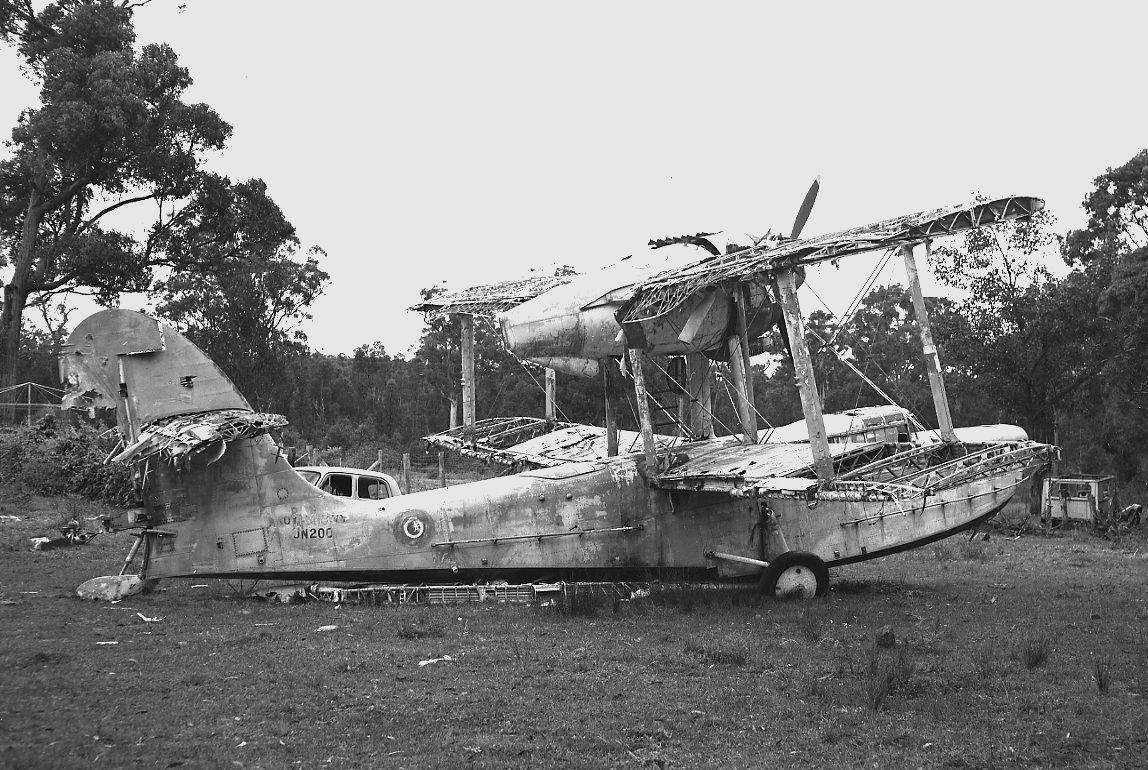 Ungainly in appearance, the Supermarine ‘Sea Otter’ was based on the earlier Supermarine ‘Walrus’ amphibian. Some 292 ‘Sea Otters’ were built between 1942 and 1945. The RAF and RN Fleet Air Arm used them as a reconnaissance and ASR aircraft. Denmark, Egypt, France and the Netherlands also ordered them.
Ungainly in appearance, the Supermarine ‘Sea Otter’ was based on the earlier Supermarine ‘Walrus’ amphibian. Some 292 ‘Sea Otters’ were built between 1942 and 1945. The RAF and RN Fleet Air Arm used them as a reconnaissance and ASR aircraft. Denmark, Egypt, France and the Netherlands also ordered them.
The ‘Sea Otter’ retained the biplane configuration of the ‘Walrus’ but used a more powerful 855 hp Bristol Mercury engine, with a tractor prop, offering a cruising speed of 130 knots and a normal range of 600 nm with a crew of 3 or 4. These amphibians played an important role in search and rescue and reconnaissance work during WWII and beyond. They performed well during their term with the RAN and were eventually replaced by the Bristol Sycamore helicopter.
The RAN acquired three Supermarine ‘Sea Otters’ from the Royal Navy FAA. They were attached to 723 Squadron from 1948 to 1953, serving variously at Nowra and at sea on the carrier HMAS Sydney. According to ADF Serials these aircraft were JN-200, RD-914 and RD-917. When struck off RAN records RD-914 was sold and scrapped; RD-917 was returned to the RN; and in 1954 JN-200 was sold to a Sydney-based company.
Following conversion to the civil resister at Bankstown ‘Sea Otter’ JN-200 was refurbished and given the call sign VH-BQI. Unfortunately, during trials on Lake Macquarie the aircraft hit a submerged stump and was holed – but managed to reach RAAF Rathmines ramp. Although repaired, it remained grounded at Rathmines for several years until ordered off the base. Eventually it was moved to a farm, at nearby Awaba, where it was exposed to the elements and soon deteriorated.
More About The Sea Otter
The Supermarine Sea Otter was a British amphibian aircraft designed and built by Supermarine; it was a longer-range development of the Walrus and was the last biplane flying boat to be designed by Supermarine; it was also the last biplane to enter service with the Royal Navy and the RAF.

The main difference between the Walrus and the Sea Otter was in the mounting of the powerplant; the Walrus had a rear-facing engine with a pusher propeller and the Sea Otter’s engine faced forward with a tractor propeller.
(Courtesy of Wikipedia)
At some point the Royal Newcastle Aero Club and several war-bird enthusiasts became aware of the ‘Sea Otter’ and were told they could have it. But the aircraft continued to remain at the farm while the search for a new home and restoration funds were found. Eventually, in 1967, when the Aero Club enthusiasts went to collect the derelict ‘Sea Otter,’ they were told that a scrap metal dealer had removed it a few days earlier.
Too late! The ‘Sea Otter’ wings were found at a lakeside dump and the engine was buried under tons of garbage. The bow and cabin section was found in a yard – already cut down to make a houseboat. Thankfully this section was rescued and for several years was housed at the Royal Newcastle Aero Club hangar. Later it was presented to the FAA Museum, at Nowra, where restoration began. However, due to the world-wide lack of ‘Sea Otter’ parts work has ceased.
In the 1950s, two ‘Sea Otter’ amphibians were purchased in the UK and shipped to Australia, for an oil exploration company in New Guinea. One was delisted and used for parts; the other sank in Port Moresby Harbour during a storm in 1952. Apparently it was not salvaged, which raises the point that should recovery be possible, then perhaps some parts could be used for restoration.
In all ‘Sea Otter’ JN 200 led a rather chequered life, but we’re glad to know her bow section is now in safe hands, at Nowra’s Fleet Air Arm Museum.
Photographs:
Main Photo: On its final approach the ‘Bat Man’ signals a clearance to land.
[2] A unique relic: the remains of JN200 on display at the FAA Museum at Nowra. Photo: FAAM
[3] RD914 on the tarmac at RANAS Nowra. RAN Photo.
[4] Exposed to the elements at Awba, Sea Otter JN200 awaits its fate. Photo: Geoff Goodall.
Above right: With hook down this Sea Otter makes a touchdown on HMAS Sydney III. Photo: George Self.




